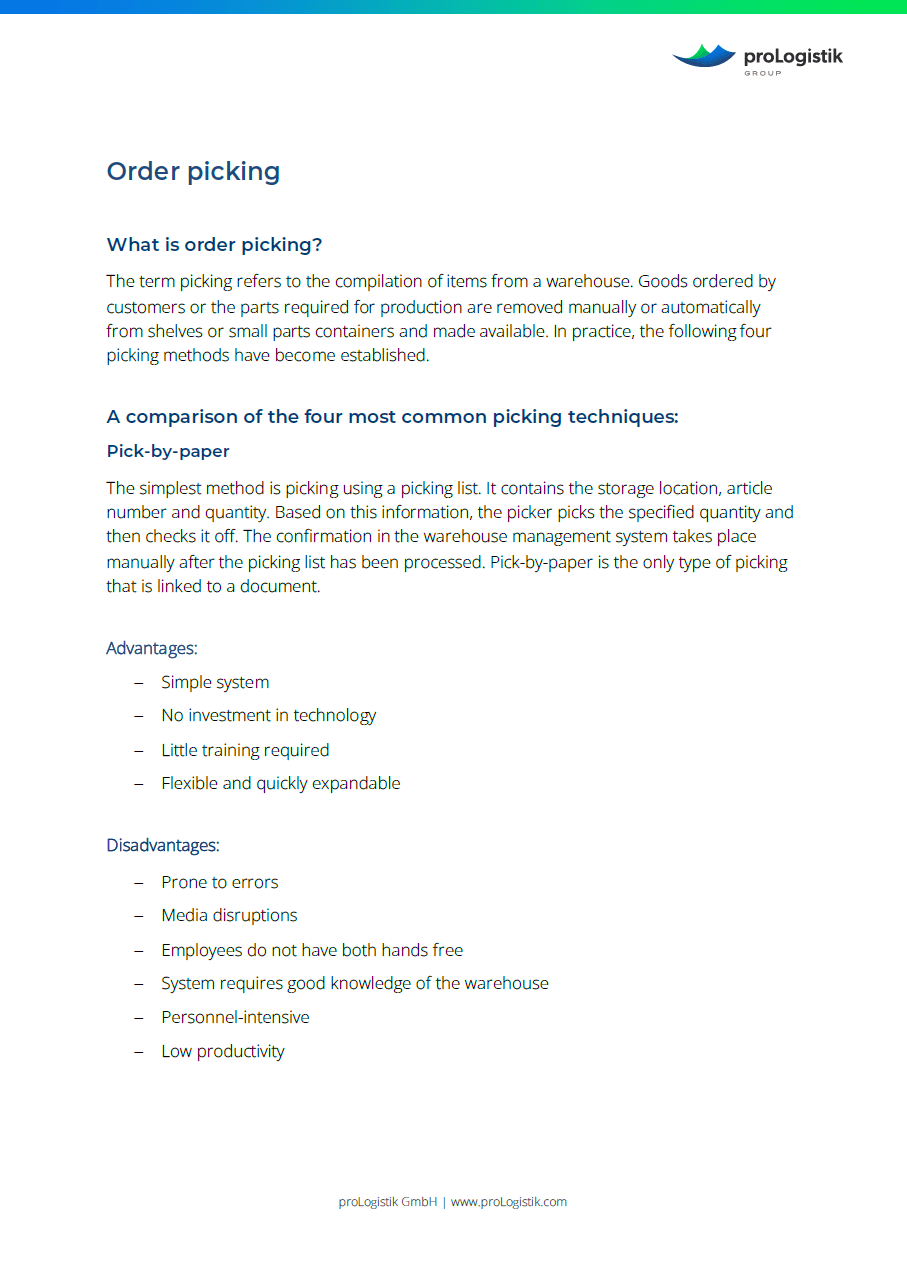What is order picking?
The term picking refers to the compilation of items from a warehouse. Goods ordered by customers or the parts required for production are removed manually or automatically from shelves or small parts containers and made available. In practice, the following four picking methods have become established.
A comparison of the four most common picking techniques:
Pick-by-paper
The simplest method is picking using a picking list which contains storage location, article number and quantity. Based on this information, the picker picks the specified quantity and then checks it off. The confirmation in the warehouse management system takes place manually after the picking list has been processed. Pick-by-paper is the only type of picking that is linked to a document.
Advantages:
- Simple system
- No investment in technology
- Little training required
- Flexible and quickly expandable
Disadvantages:
- Prone to errors
- Media disruptions
- Employees do not have both hands free
- System requires good knowledge of the warehouse
- Personnel-intensive
- Low productivity
Pick-by-scan
The picking list is displayed on a portable data terminal (called MDE) or a forklift terminal. Picked items are confirmed on the MDE. In most cases, the MDE is connected directly to the warehouse management system via cable or wireless network. The data terminals used are often combined with barcode scanners or RFID readers in one device.
Advantages:
- Reduced search time
- Fewer picking errors
- Direct feedback to the WMS
- Can be combined with forklift guidance system
- Short training time
Disadvantage:
- Employee does not have both hands free
Pick-by-voice
With pick-by-voice, communication between the system and the picker takes place by voice. The order picker works with a wired or wireless headset, which is either connected to a mobile computer or a specially designed device. The orders are sent from the warehouse management system to the picker via radio, usually WLAN / WiFi.
Advantages:
- Reduced search time
- Employee has both hands free
- High picking performance
- Minimal error rates
- Fewer conversations with colleagues
- Short training time
Pick-by-light
In pick-by-light systems, all storage compartments are equipped with a display, a signal lamp and at least one acknowledgement button. During picking, the compartment with the next item to be picked lights up. The quantity to be picked appears on the display. The removal is then confirmed with the acknowledgement button. Closely related is the Pick-to-Light method, which is suitable for taking back returns, for example.
Advantages:
- Reduced search time
- Direct feedback to the avalanche transceiver
- Fewer picking errors
- Employee has both hands free
- Short training time
Disadvantages:
- Unrecognized display failures lead to picking errors
- High investment
- Low flexibility

